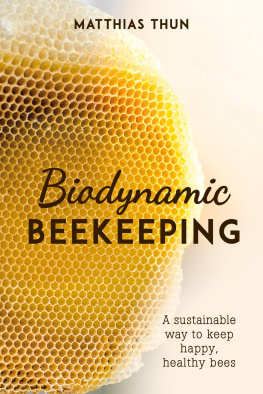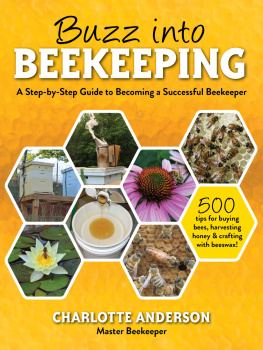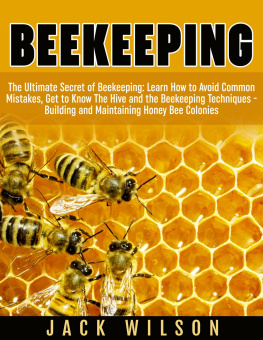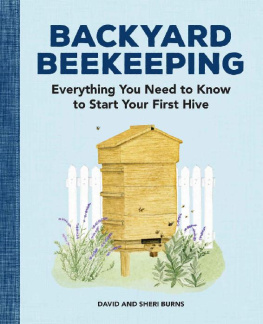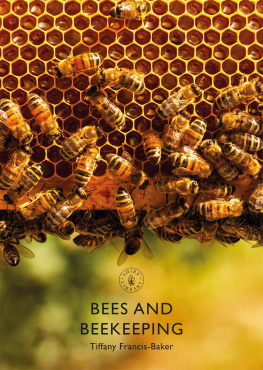Matthias K. Thun - Biodynamic beekeeping : a sustainable way to keep happy, healthy bees
Here you can read online Matthias K. Thun - Biodynamic beekeeping : a sustainable way to keep happy, healthy bees full text of the book (entire story) in english for free. Download pdf and epub, get meaning, cover and reviews about this ebook. year: 2020, genre: Children. Description of the work, (preface) as well as reviews are available. Best literature library LitArk.com created for fans of good reading and offers a wide selection of genres:
Romance novel
Science fiction
Adventure
Detective
Science
History
Home and family
Prose
Art
Politics
Computer
Non-fiction
Religion
Business
Children
Humor
Choose a favorite category and find really read worthwhile books. Enjoy immersion in the world of imagination, feel the emotions of the characters or learn something new for yourself, make an fascinating discovery.
- Book:Biodynamic beekeeping : a sustainable way to keep happy, healthy bees
- Author:
- Genre:
- Year:2020
- Rating:4 / 5
- Favourites:Add to favourites
- Your mark:
- 80
- 1
- 2
- 3
- 4
- 5
Biodynamic beekeeping : a sustainable way to keep happy, healthy bees: summary, description and annotation
We offer to read an annotation, description, summary or preface (depends on what the author of the book "Biodynamic beekeeping : a sustainable way to keep happy, healthy bees" wrote himself). If you haven't found the necessary information about the book — write in the comments, we will try to find it.
Matthias K. Thun: author's other books
Who wrote Biodynamic beekeeping : a sustainable way to keep happy, healthy bees? Find out the surname, the name of the author of the book and a list of all author's works by series.
Biodynamic beekeeping : a sustainable way to keep happy, healthy bees — read online for free the complete book (whole text) full work
Below is the text of the book, divided by pages. System saving the place of the last page read, allows you to conveniently read the book "Biodynamic beekeeping : a sustainable way to keep happy, healthy bees" online for free, without having to search again every time where you left off. Put a bookmark, and you can go to the page where you finished reading at any time.
Font size:
Interval:
Bookmark:
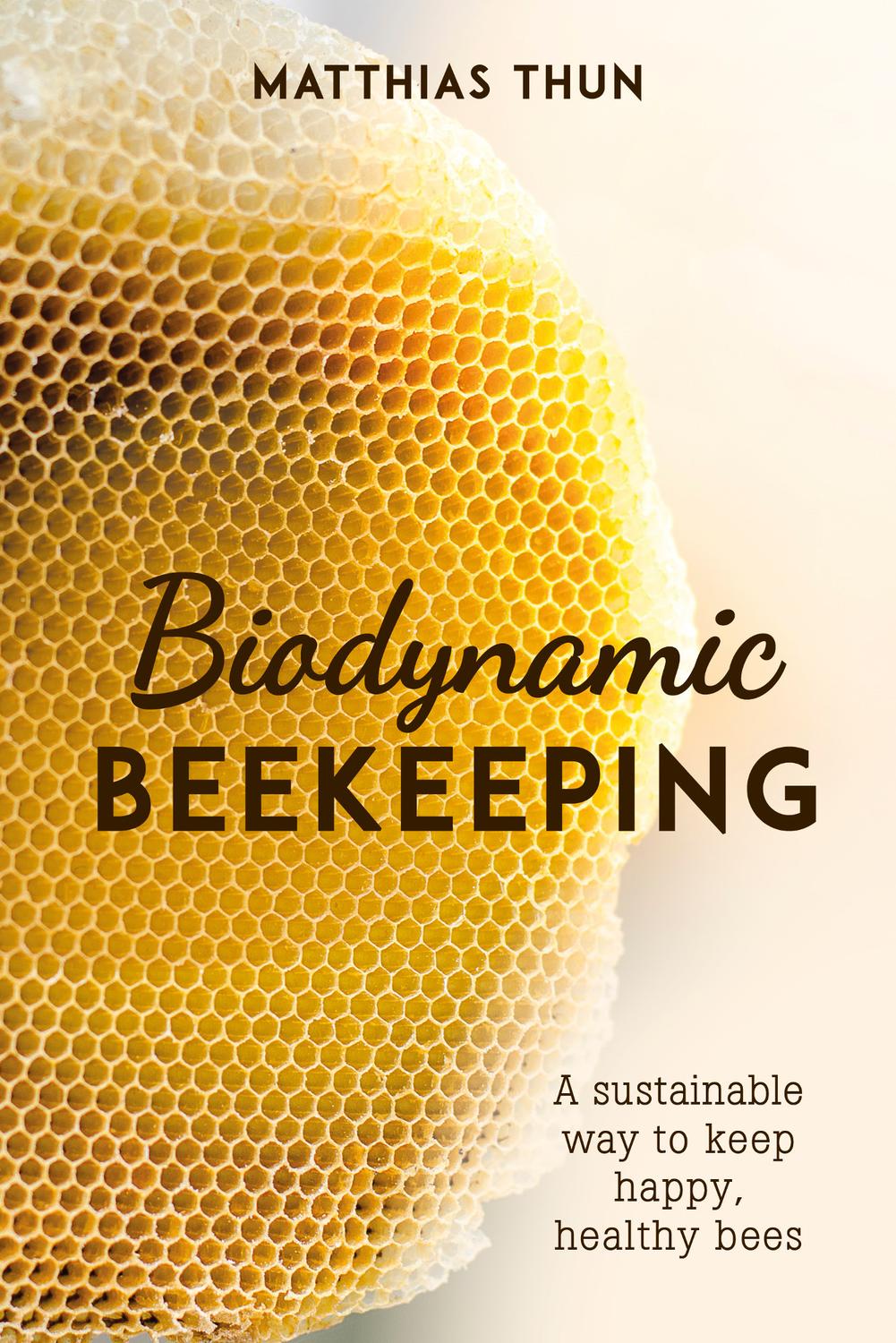
It was with great sadness that we learned of the sudden passing of Matthias Thun in June 2020 while the English edition of this book was being prepared for publication. Matthias was the son of Maria Thun, the biodynamic pioneer and creator of the Biodynamic Calendar. He applied her methods to beekeeping and conducted his own extensive research and experimentation. The results of his invaluable work, carried out over the course of fifty years of caring for bees, are to be found in this book.
The translation of this book has been long awaited by English-speaking beekeepers who are interested in biodynamics. Not only is it the first book to translate into modern beekeeping practice Rudolf Steiners indications on the essential nature of the honey bee, indications that have since inspired many apiarists to join the growing trend towards natural beekeeping, but it is also the only practical beekeeping book that integrates awareness of cosmic phenomena into bee husbandry.
Rudolf Steiner (18611925), the founder of anthroposophy, a science of the spirit, lectured on many aspects of practical life, one of which was an approach to plant and animal husbandry that is holistic in the fullest possible sense. It came to be called biodynamics, and today, biodynamic agriculture and horticulture take their place amongst the foremost initiatives engaged in organic food production, recognisable by the Demeter certification label.
Inspired by Steiners indications in his agriculture lectures on the involvement in terrestrial life processes of not only the planets but also the constellations of the zodiac, Maria Thun (19222012) developed her Biodynamic Calendar, which Matthias subsequently applied to beekeeping. Depending on the position of the planets and the constellation, the days of the year acquire different qualities according to the four classical elements. Instead of disturbing the bees on days that suit the beekeepers convenience, Matthias shows how, with the help of the calendar, the most propitious times can be chosen for carrying out such tasks as hive inspections, harvesting honey, artificial swarming and even grafting larvae.
A special feature of the authors method is working with the swarm urge rather than against it, as is common in modern beekeeping. He cites a vivid example of how long-term swarm suppression leads to colony disease. In fact, recent research has shown that when colonies are allowed to swarm naturally, the reinvigoration this brings contributes to their coping in the long term with the varroa mite and its highly damaging viruses.
Another feature is the use of natural combs, built by the bees themselves without the use of artificial foundation, which avoids introducing into the hives pesticides that have accumulated in old and recycled beeswax. We are given a thorough guide to the management of natural combs, which it is almost impossible to find in other modern beekeeping books. Matthias Thun describes the use of a special case of such combs, namely the building frame, a device almost unknown outside the European continent, which allows the beekeeper to judge the status of a colony without opening it. Opening a hive, thereby letting out the colonys warmth, must surely be among the most bee-unfriendly tasks that the beekeeper has to perform.
Following an indication by Steiner to add chamomile tea to bee feed to make it more digestible, Matthias extends this to include teas of all the other plants used in the biodynamic preparations: yarrow, chamomile, dandelion, valerian, nettle, oak bark and horsetail. This further helps link his approach to the biodynamic method, as it is impossible for biodynamic beekeepers to ensure that their bees foraging range (often more than a mile in radius) is entirely on land under biodynamic management.
I commend this book to not only experienced beekeepers who would like to transition to a more bee-friendly approach, but also beginners who, while having access in some form to instruction about basic beekeeping, do not want to be steered into the conventional, mechanistic apiculture that new generations of beekeepers are increasingly finding unsatisfactory.
David Heaf
Author of The Bee-friendly Beekeeper
Over the last hundred years, modern beekeeping has been transformed by new practices and new technologies, from the introduction of plastic building frames in hives to the artificial breeding of queen bees, all with the aim of increasing the production of honey and maximising profit. While these methods have been successful, they have proven detrimental to the health and well-being of the bees. Bee colonies are now weaker and more vulnerable to diseases such as varroosis, which has led to an alarming decline in the bee population and raised concerns about an impending ecological crisis. The future of the bee appears uncertain.
Faced with these worrying circumstances, beekeepers are beginning to ask if there is a more sustainable way of looking after bees, one that not only takes into account their natural habits and essential natures, but also considers their connection to their environment and the influence it has on them. This book explores one such method by describing the effects that cosmic rhythms the movements of the planets and the stars have on the activity of bees. Matthias Thuns methods are based on over fifty years experience of beekeeping and on the numerous experiments and observations that he and the Thun family have carried out in this area. He has found, for example, that certain times are better for promoting the comb-building instinct and colony reproduction, while others are better for nectar foraging. Bees are more contented and easier to work with on certain days, whereas on others they are agitated and more liable to sting.This holistic method has also helped in combatting disease, allowing colonies to remain strong and healthy throughout the year.
While this approach may seem unconventional, for those beekeepers wanting to explore a more bee-centred, bee-friendly approach to caring for their bees it offers a harmonious way of working that is in accordance with the bees essential nature, and one that seeks to preserve the bees for the future. Matthias Thun begins his exploration of cosmic rhythms with a description of the bee year.
* * *
Most conventional beekeepers think of the bee year as beginning in late summer. According to their thinking, late summer care needs to be carried out conscientiously because only strong and healthy colonies will survive the winter.
This view of the bee year holds if we assume that winter bees only emerge from the last brood period of late summer, but scientists have discovered that winter bees also come from summer bees that have spared themselves from the industrious and exhausting labours of their fellow workers. This raises the question as to whether conventional opinion about summer or late summer care is tenable.
Other observations raise similar doubts. If we take a year in which there is extremely strong foraging in woodland during the first half of July (for example, when honeydew flow predominates), then late summer colony care might not yield the expected success, as I have observed from the relatively weak colonies that emerge the following spring. Winter may also present very varied weather conditions that can favourably or adversely affect the wintering bees. These examples of variation (and more could be added) suggest to me that in spring we cannot reckon with the colonies we wintered, but only with those that have survived the winter. We cannot assume that perfect management in late summer will result in perfect colonies in spring. This does not mean that such care should be neglected, but rather that we must make do and be satisfied with whatever colonies make it through the winter. The conventional emphasis on late summer care as starting the bee year needs to be challenged.
Font size:
Interval:
Bookmark:
Similar books «Biodynamic beekeeping : a sustainable way to keep happy, healthy bees»
Look at similar books to Biodynamic beekeeping : a sustainable way to keep happy, healthy bees. We have selected literature similar in name and meaning in the hope of providing readers with more options to find new, interesting, not yet read works.
Discussion, reviews of the book Biodynamic beekeeping : a sustainable way to keep happy, healthy bees and just readers' own opinions. Leave your comments, write what you think about the work, its meaning or the main characters. Specify what exactly you liked and what you didn't like, and why you think so.

